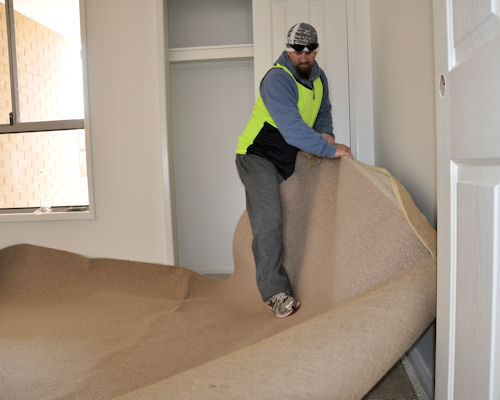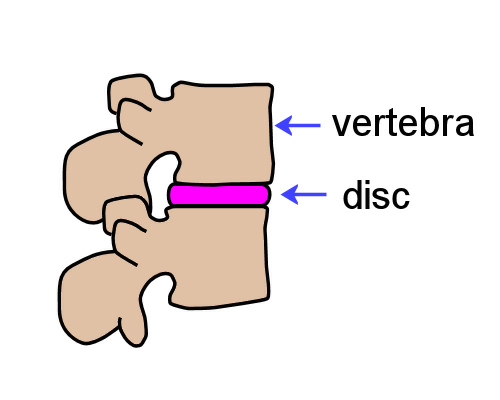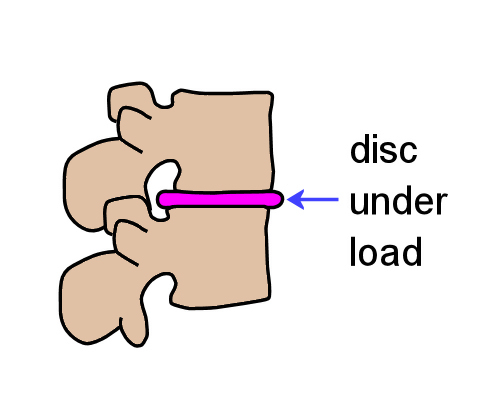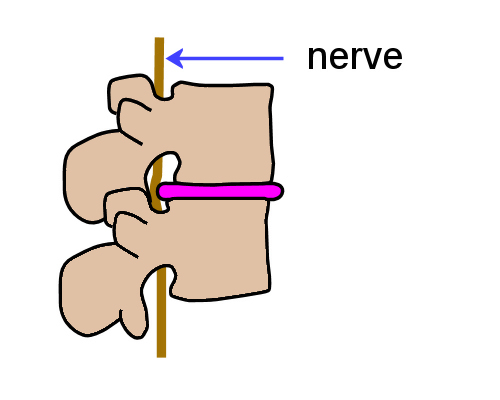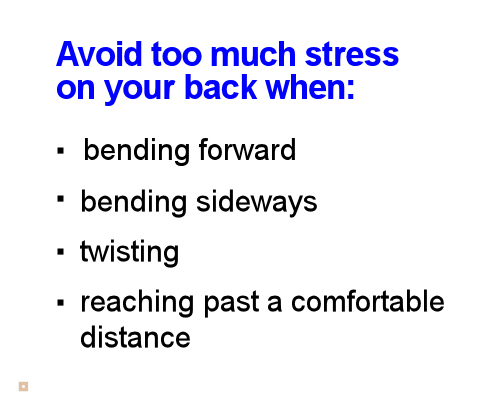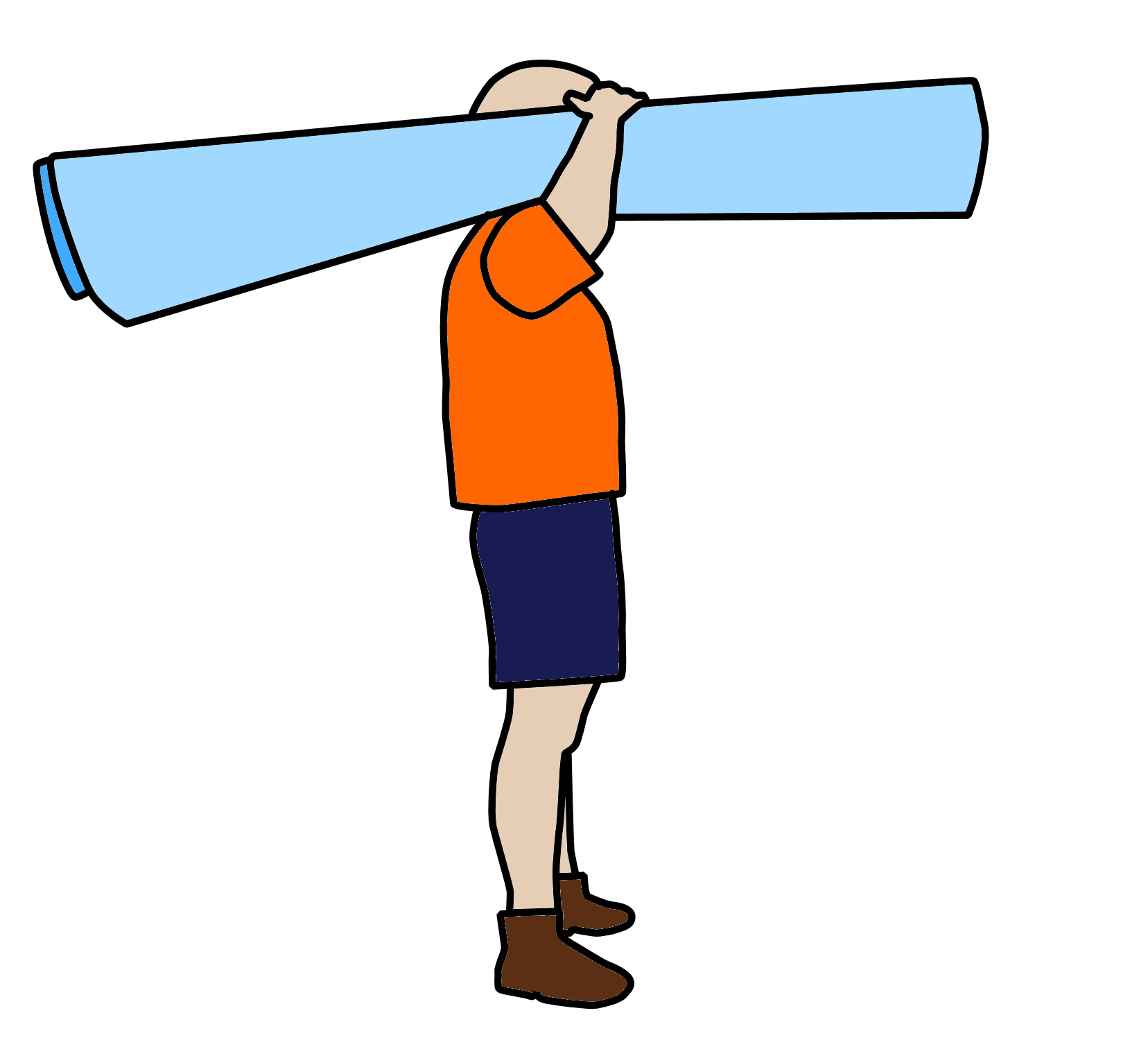Manual handling
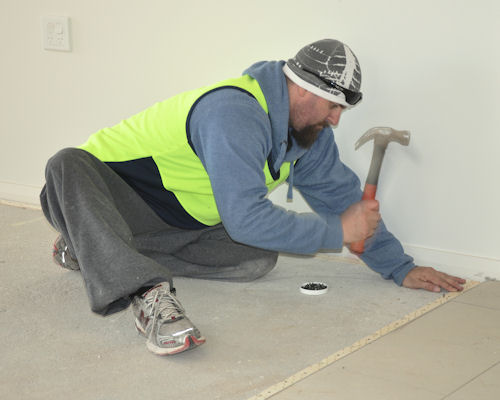 Audio for slide 2 (mp3 |6|KB)
Audio for slide 2 (mp3 |6|KB)
It's worth keeping in mind that joint and muscle problems are much more likely to be caused by gradual wear and tear on your body through bad work practices than from a one-off accident.
Flooring installers are particularly prone to injuries and long-term medical conditions in two parts of their bodies - their back and their knees.
Because knees can cause so much trouble for floor layers, we'll look at that separately in the next lesson. So for now, let's talk about back care.

Flooring installers are particularly prone to injuries and long-term medical conditions in two parts of their bodies - their back and their knees.
Because knees can cause so much trouble for floor layers, we'll look at that separately in the next lesson. So for now, let's talk about back care.

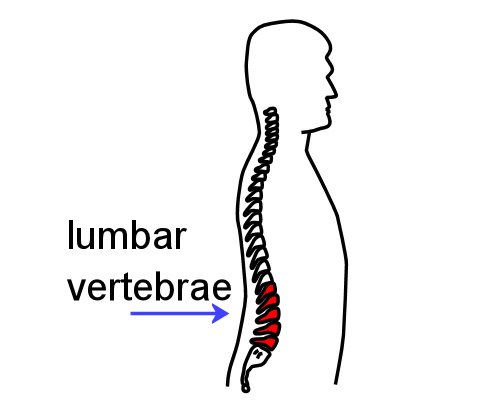 Audio for slide 3 (mp3 |6|KB)
Audio for slide 3 (mp3 |6|KB)
Looking after your back
Back injury is sometimes caused by lifting a load that's too heavy, but it can also occur from pushing, pulling, or twisting while your back is under strain. The real problem area for most people is the lumbar region. This is the area that allows you to bend forwards, backwards, from side to side and to twist around. To understand why the lumbar region is prone to injury, you need to know how it's constructed.
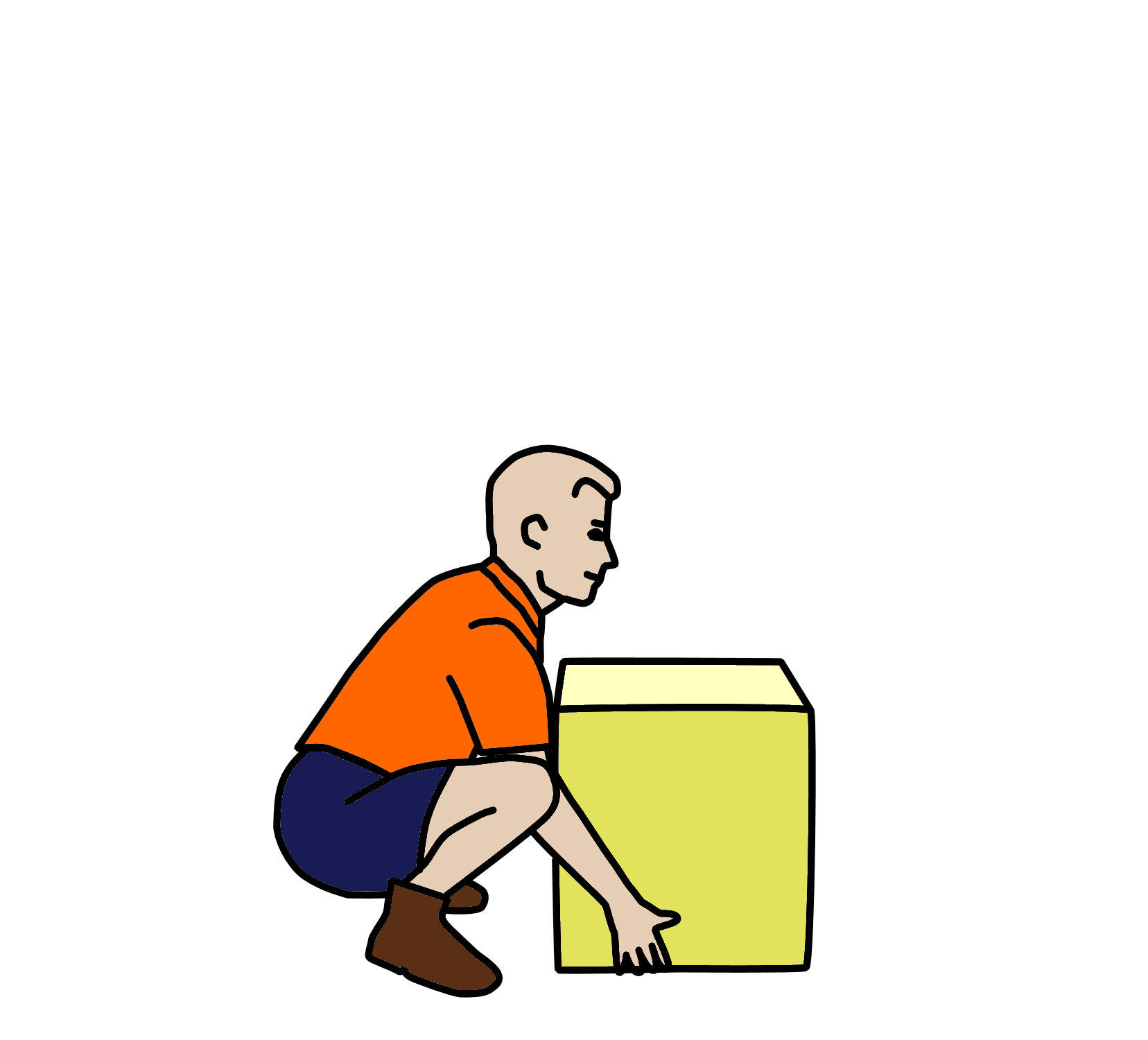 Audio for slide 8 (mp3 |6|KB)
Audio for slide 8 (mp3 |6|KB)
Here are the main steps you should follow when you need to lift and carry a large, heavy or awkward object.
- Size up the load and decide whether you'll need help to lift or move it.
- Check the path you will be taking to make sure there are no obstacles in the way.
- Place your feet firmly on the ground and put your body in a balanced position.
- Bend your knees to get down to the load, and keep your back as straight as possible.

 Audio for slide 9 (mp3 |6|KB)
Audio for slide 9 (mp3 |6|KB)
- Use your legs to do the lifting as you stand up straight.
- Keep the load close to your body while you're carrying it.
To put the object down again, use the same procedure as for picking it up - keep your body well balanced and use your legs, not your back. Also remember that while your joints and muscles are under strain, you should avoid twisting your back.

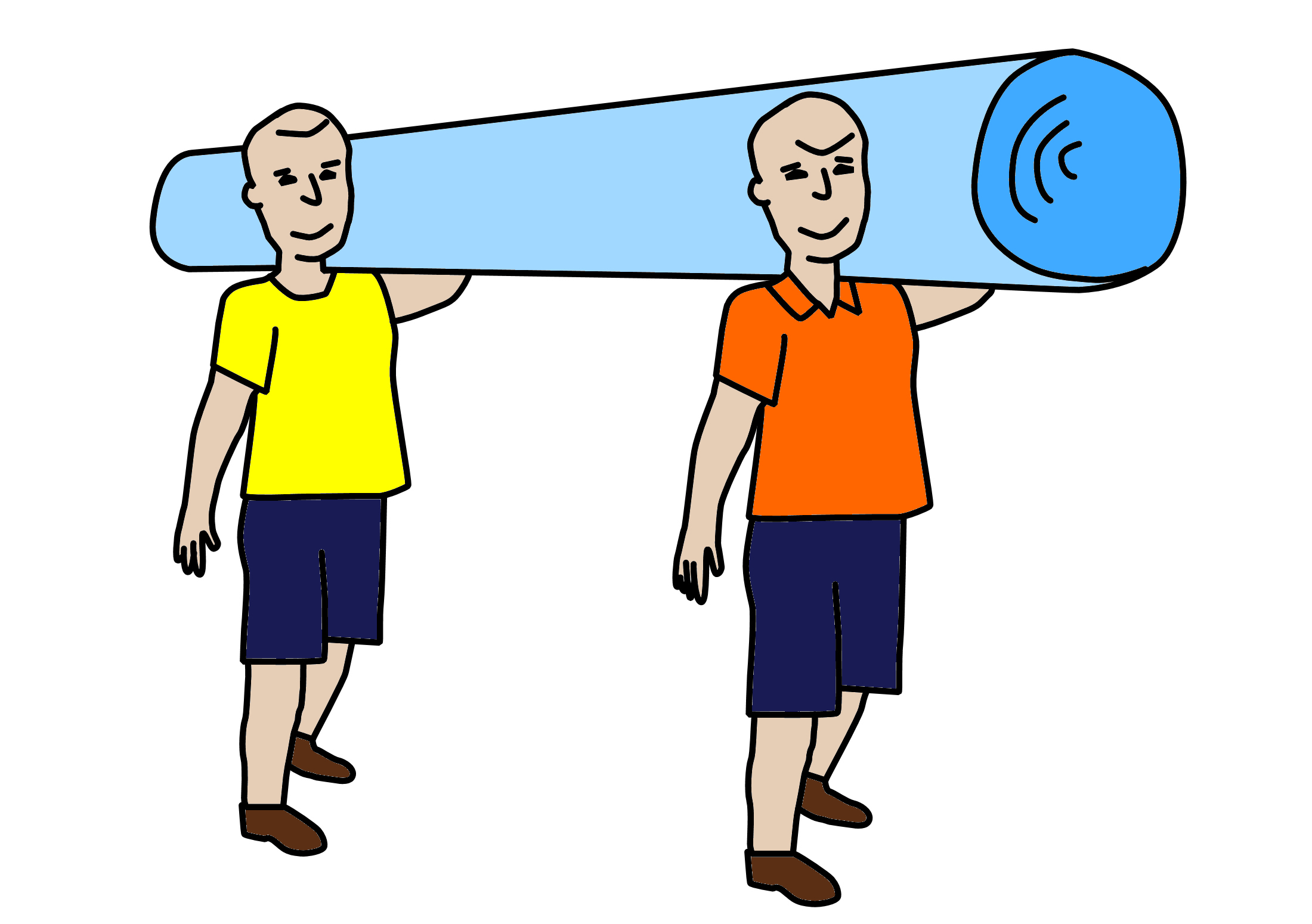 Audio for slide 11 (mp3 |6|KB)
Audio for slide 11 (mp3 |6|KB)
If the roll is long or heavy, or if you need to manoeuvre it around awkward hallways or up stairs, it's best to get an offsider to help.
But remember, if you're lifting and carrying carpet with an offsider, good communication is vitally important.
You both need to work in unison and know exactly what the other person is about to do.

But remember, if you're lifting and carrying carpet with an offsider, good communication is vitally important.
You both need to work in unison and know exactly what the other person is about to do.

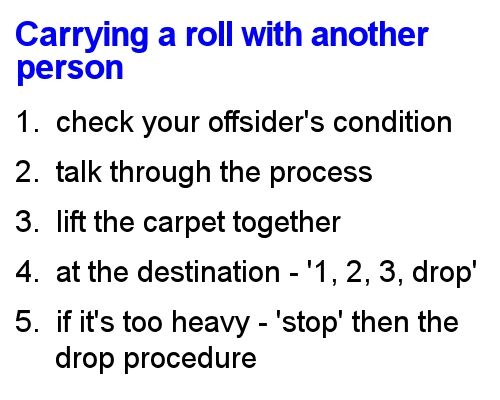 Audio for slide 12 (mp3 |6|KB)
Audio for slide 12 (mp3 |6|KB)
Here are some hints on how to carry a roll of carpet with another person.
- Check that your offsider doesn't have any back or muscle injuries that might affect the work you're about to do.
- Talk through the process. State which side you are going to stand on, what path you'll take, where you're going to put it, and how you'll deal with any obstacles or corners on the way.
- Lift the carpet together. You might even want to lift on the count of three: '1, 2, 3, lift.'
- When you get to the destination, count: '1, 2, 3, drop', and both tilt your shoulders at the same time to let the carpet roll off and drop to the floor.
- If at any time you're not comfortable or the carpet is too heavy, call out 'Stop' and do the '1, 2, 3, drop' procedure together. Don't let go of your end unexpectedly, because this will jar the other person.

 Go to Looking after your knees
Go to Looking after your knees